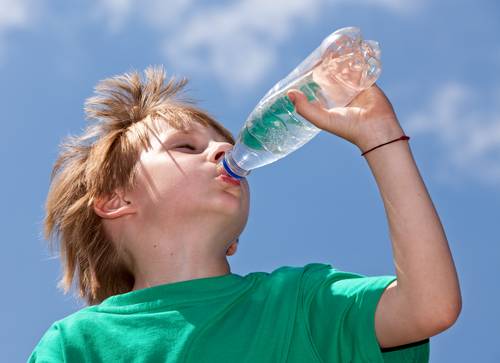In today’s society, young athletes are inundated with daily stressors that can adversely affect their sports performance. From over-scheduled days and decreased physical activity, to fast foods and electronics, young athletes are suffering from imposed societal pressures. As parents, we want the best for our child, and coaches and trainers are no different. How can we, collectively, mitigate societal pressures and influences on our young athletes, while keeping them healthy? Back to basics.
Basic #1: Sleep
There does not seem to be enough hours in the day for adolescent athletes to accommodate long school days plus activities. With homework and studying, commute time to and from school, and commitments to sports programs and activities, something has to give. Unfortunately, for young athletes, that “something” is usually sleep. According to the National Sleep Foundation, adolescents (ages ten to seventeen) need between 8.5-9.25 hours of sleep per night. Yet, the average adolescent gets only 7-7.25 hours of sleep per night.2
Most are familiar with the outward signs of sleep deprivation – grouchiness, sleepiness, etc. – but how else does the lack of sleep affect young athletes? To begin with, growth hormone is released during sleep. This hormone is necessary for the stimulation and repair of muscles and tissues, building bone, burning fat, and aiding in the body’s repair and recovery. Lack of sleep stresses the body and encourages the production of cortisol – the stress hormone. Cortisol can inhibit the recovery rate of athletes, lead to insulin resistance and weight gain, lower immunity and bone density, and interfere with learning and memory. The fact that sleep deprivation alone can hinder recovery time and muscle and tissue growth, affect learning, and increase the chances for health-related problems is indicative of the absolute necessity of getting enough sleep, every night, for the growing athlete. Back to basics.
Basic #2: Cross Training
With rising cell phone usage and the availability of electronic games, children do not go out to play as they once did. When a sport season is over, the tendency is for young athletes to return to a more sedentary lifestyle, rather than maintain their fitness or activity level (competitively or recreationally). Coaches and trainers should encourage cross training, both in-season and off-season.
Cross training encourages year-round activity and can help increase the overall strength level of the young athlete, while allowing for physical and mental recovery (avoiding sport burnout). With many young athletes specializing in one sport, year round, the risk of injury increases, as the repetitive motions of the sport stresses growing joints, muscles, and ligamentous structures. Even if an adolescent trains for one sport, year round, the importance of cross training cannot be emphasized enough. It is especially important for adolescent athletes to recognize that the greater their training intensity, the greater their need for recovery. By alternating sports or physical activity through cross training, the young athlete will achieve a higher state of fitness, while allowing the body the rest it needs to recover properly. Back to basics.
Basic #3: Nutrition
 In this era of fast foods and convenience foods – all of which are readily available, easily purchased, and instantly gratifying for young athletes – coaches and trainers must educate adolescent athletes on proper nutrition. Recognizing the varying needs of individual athletes, the science does not change: a young athlete’s diet should consist of carbohydrates, protein, and fats, in the proper ratios. Fast food and convenience foods may very well contain carbohydrates, proteins, and fats, but they are full of additives, flavorings, and preservatives, which negate the nutritional aspects of the food and are often more detrimental to a developing athlete than they are beneficial. Back to basics.
In this era of fast foods and convenience foods – all of which are readily available, easily purchased, and instantly gratifying for young athletes – coaches and trainers must educate adolescent athletes on proper nutrition. Recognizing the varying needs of individual athletes, the science does not change: a young athlete’s diet should consist of carbohydrates, protein, and fats, in the proper ratios. Fast food and convenience foods may very well contain carbohydrates, proteins, and fats, but they are full of additives, flavorings, and preservatives, which negate the nutritional aspects of the food and are often more detrimental to a developing athlete than they are beneficial. Back to basics.
Basic #4: Hydration
 Water comprises approximately 55-70% of our body. Because young athletes produce more metabolic heat and cannot cool their bodies as efficiently as older athletes, they are at an increased risk for dehydration, as well as other heat-related illnesses. Water should be the first and foremost hydrating liquid for a young athlete. Water acts as a cooling agent for the body, carrying nutrients and oxygen to the cells in the body and protecting vital organs. Coaches and trainers need to ensure that young athletes have water and are drinking it during activity. Because younger athletes are more likely to consume flavored drinks rather than water, they are less likely to replenish their body with water as they sweat. And, as they are not used to drinking water on a daily basis, they are less likely to recognize the symptoms of dehydration.
Water comprises approximately 55-70% of our body. Because young athletes produce more metabolic heat and cannot cool their bodies as efficiently as older athletes, they are at an increased risk for dehydration, as well as other heat-related illnesses. Water should be the first and foremost hydrating liquid for a young athlete. Water acts as a cooling agent for the body, carrying nutrients and oxygen to the cells in the body and protecting vital organs. Coaches and trainers need to ensure that young athletes have water and are drinking it during activity. Because younger athletes are more likely to consume flavored drinks rather than water, they are less likely to replenish their body with water as they sweat. And, as they are not used to drinking water on a daily basis, they are less likely to recognize the symptoms of dehydration.
While water intake will vary according to the athlete, the event, and the circumstances, four to eight ounces of water for every fifteen to twenty minutes of exercise is a good starting point. Touching upon but not delving into sports drinks, the electrolytes found in sports drinks can be beneficial in regulating the young athlete’s nerve and muscle function and replacing electrolytes lost through sweat. For adolescent athletes enduring physical activity for more than sixty to ninety minutes at a time, or for young athletes who practice in high heat and humidity, sports drinks can be beneficial in replenishing lost nutrients. The bottom line, however, is that water is essential, and it is necessary for an athlete to perform optimally. Back to basics.
With the constant barrage of external stimuli surrounding young athletes, sports offer an opportunity to step away from mounting societal pressures. Coaches and trainers can help mitigate societal stressors and keep young athletes healthy through education and encouragement to get adequate sleep, to cross train, to practice good nutrition, and to properly hydrate with water. Back to basics.
References:
1. National Sleep Foundation. “Teens and Sleep.” Accessed 10/12/2014
2. Mindell JA. & Owens JA., “A Clinical Guide to Pediatric Sleep: Diagnosis and Management of Sleep Problems.” (Philadelphia: Lippincott Williams & Wilkins, 2003)
Photos courtesy of Shutterstock.






